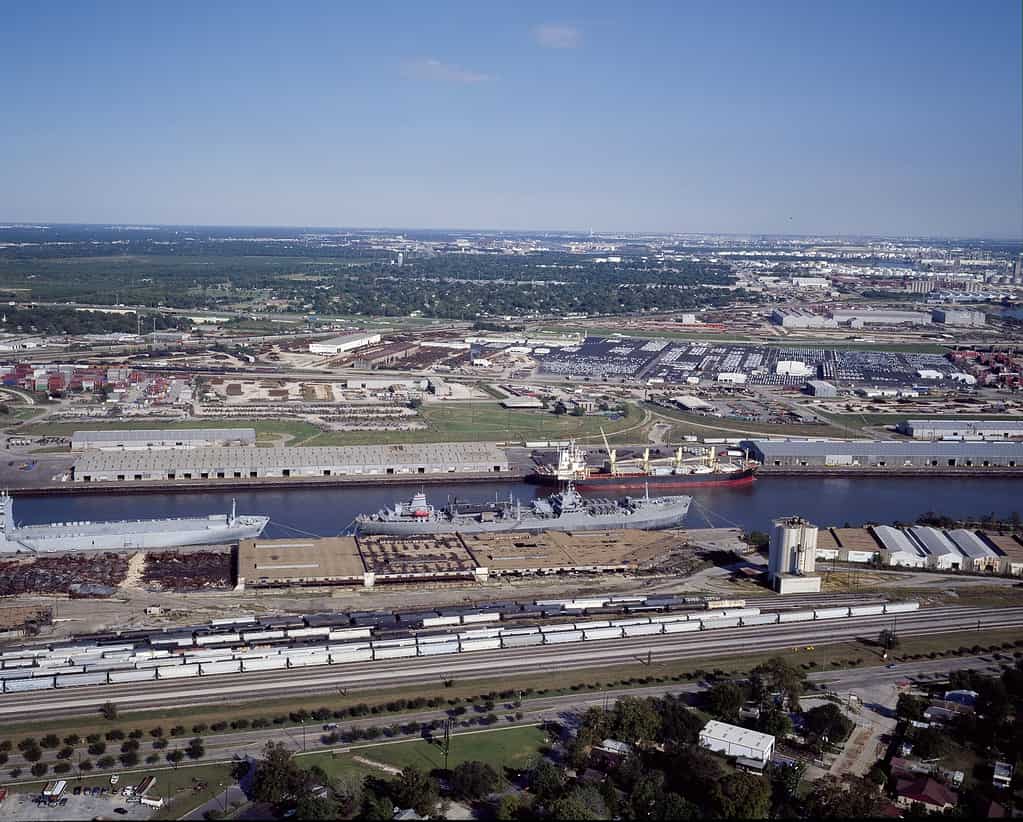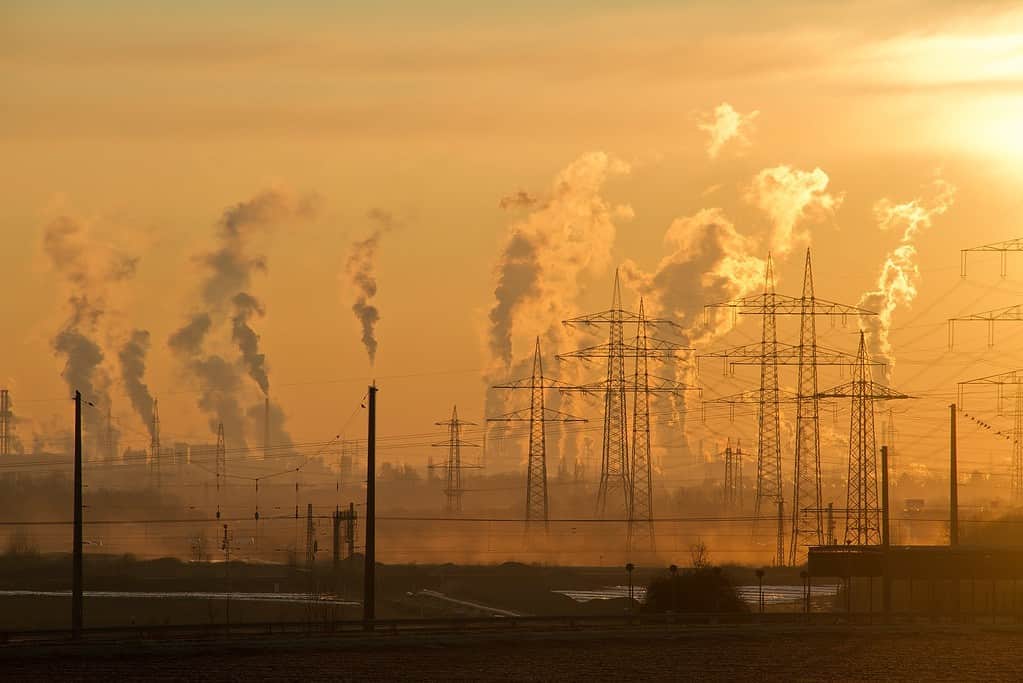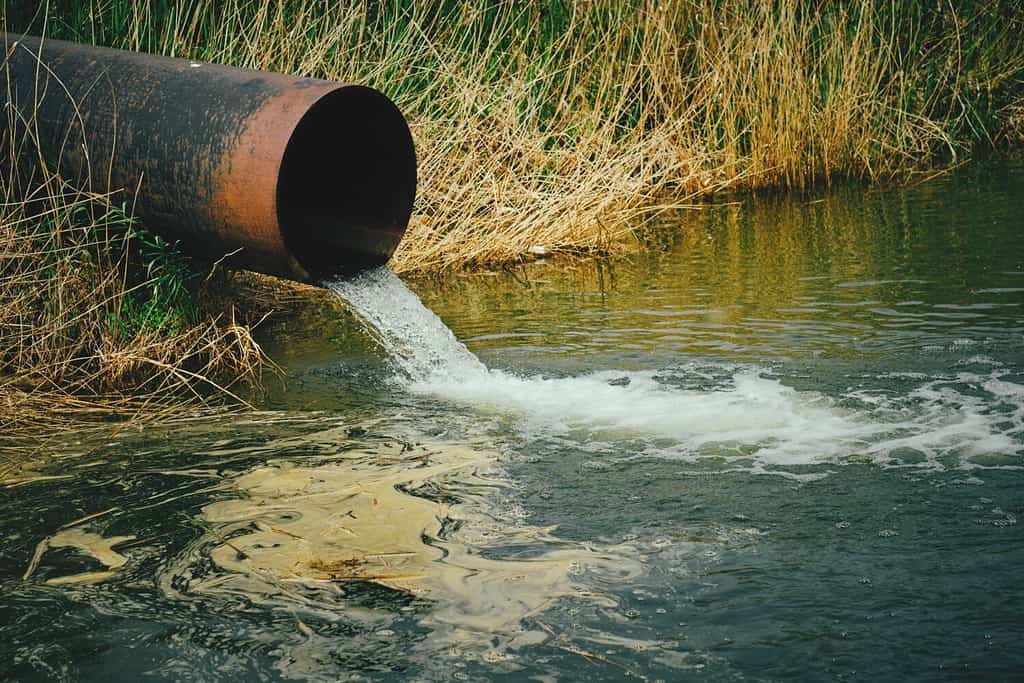The Gulf of Mexico has a population of marine life like no other place in the world. Plenty of whales, sharks, and dolphins use it as their breeding and birthing sanctuary. The estuaries like Lake Pontchartrain have some of the most diverse populations of life, with many of those being endangered birds and sea life. Sadly, it is also heavily polluted. In this article, we will uncover the top pollutants in the Gulf of Mexico.
5. Shipyards and Vessels

Ports and shipyards are notorious polluters.
©Carol M. Highsmith / Public domain, via Wikimedia Commons - License
It might not be the first thing that comes to mind when you think of a port or shipyard, but they are vast polluters of the Gulf of Mexico and everywhere else they are located. The amount of huge container-carrying vessels that enter ports can be massive, which certainly doesn’t help anything. The emissions from the vessels and vehicles used to navigate the containers off the ships are what can cause a hazy ocean breeze. The particulate matter or aerosols from the Gulf of Mexico contain high concentrations of sulfate, polluting the Gulf breeze and the water.
The grease and oil that are used to maintain the vehicles and machinery at these Gulf Coast ports also feed that pollution to the ocean. With the number of vessels in and out daily, there’s also a ton of other spilled pollutants that end up going that way.
4. Industrial Waste

The Gulf Coast is alive with refineries and chemical processing plants.
©SD-Pictures / Pixabay - License
The amount of industries along the Gulf of Mexico is more than can be counted. In Louisiana, so many hazardous, chemical-processing plants along the Gulf and waterways feed into the Gulf that there’s an area between New Orleans and Baton Rouge on the Mississippi River referred to as “Cancer Alley.” It is a desolate area where few live, though some have no other choice. Some of the most impoverished populations in Louisiana live in this otherwise forbidden “Cancer Alley.” They suffer from the many health consequences that go along with it. Industries are known for polluting the water and air. The airborne residue from the plants likely covers everything in that area, if not further away.
Sadly, the Mississippi River and the area’s other waterways feed into the Gulf of Mexico. Those areas pass through vast wetlands before reaching the ocean. The wetlands are filled with life with no say in the pollution they exist in or around. More petrochemical industries are waiting to be in that area until the plants are built. There is no end in sight. This isn’t just a Gulf Coast problem. Every state with waterways that feed into the Mississippi River or industries that are along the river is guilty of contributing to the pollution.
3. Sewage

Raw sewage flows into the oceans and creates a huge array of issues.
©Dmitriy Prayzel/Shutterstock.com
One of the largest pollutants in the Gulf of Mexico is raw sewage. This is amplified anytime the coast faces a tropical storm or immense flooding inland. The states the Mississippi River flows through also contribute to the sewage pollution in the Gulf.
In fact, Chicago’s sewage is the largest single source of phosphorus pollution. Between the lawn and agricultural chemicals that run off the land with heavy rains and into the river and the raw sewage that also makes its way there, the Mississippi dumps tons of nitrogen and phosphorus into the Gulf of Mexico. This accelerates the growth of a dangerous type of algae, choking off the oxygen supply wherever it covers.
This lack of oxygen in the Gulf has caused an 800-mile-wide dead zone. A dead zone can and likely will spread as the pollution continues, killing off all marine life. This means a severe decline in fish and other life. Besides the massive impact this dead zone has on aquatic life, it has also cost the fishing and tourism industries $82 million annually. Over 40% of the country’s seafood comes from the Gulf.
2. Agricultural Runoff

Agricultural chemical runoffs are especially dangerous to the Gulf of Mexico.
©O partime photo/Shutterstock.com
As discussed in the last entry, agricultural runoffs cause huge problems for the Gulf by dumping tons of harmful plant accelerants in the ocean. When the growth chemical enters the ocean, it accelerates the growth of dangerous algae blooms. The algae, overgrown due to the nitrogen and phosphorus, depletes the Gulf of oxygen and kills all life nearby.
The dead zones cause serious issues for marine life by killing it all off and causing a large-scale decline in food for other marine animals. Whales are particularly affected by the lack of krill, while sharks will need to swim into different parts of the ocean to find food, causing a decline in fish and krill of the marine life now inundated with animals searching for food.
1. Oil Spills

Petroleum products are the biggest danger to the Gulf of Mexico.
©Tigergallery/Shutterstock.com
The Gulf is a hotspot for oil. The coastal waters are filled with drilling platforms and underground lines. We all know how frequently spills and leaks happen in the Gulf. This jeopardizes marine life and the nation’s seafood by poisoning it with dangerous, cancer-causing chemicals. No matter how thoroughly spills are cleaned, those chemicals are forever. They will always remain in the ocean, the seabed, and the coast the poisoned water washes up on.
The public may know about some of the larger, more publicized spills, but they are not informed about how many spills happen annually. Thousands of oil spills happen in our oceans every year! The biggest on record was the Deepwater Horizon spill in 2010 with BP Oil. A record 134 million gallons spilled into the ocean before it was capped. The restoration is still ongoing 14 years later, and that crude oil will never be completely cleaned up.
The photo featured at the top of this post is © Jim Schwabel/Shutterstock.com
Thank you for reading! Have some feedback for us? Contact the AZ Animals editorial team.







